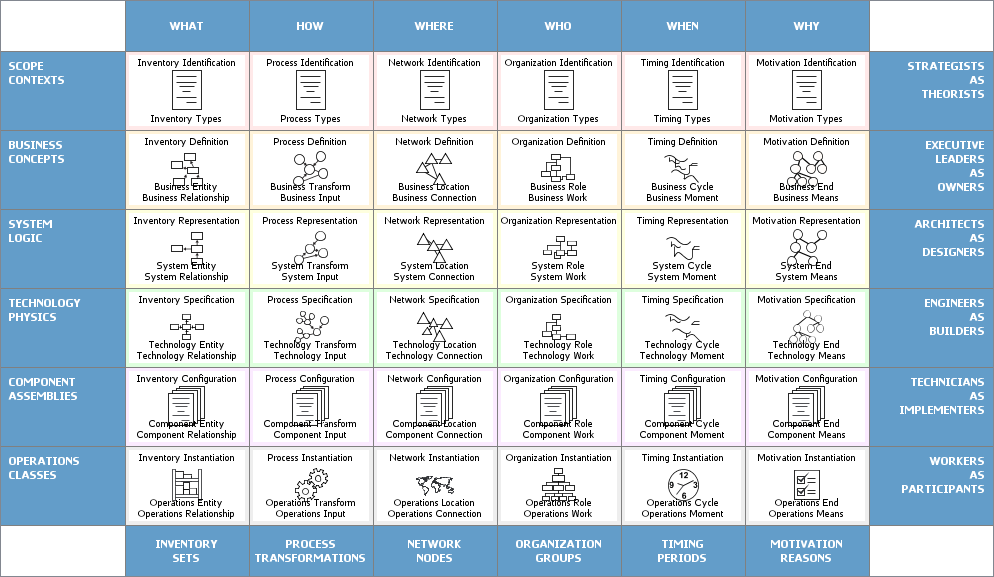Enterprise architecture frameworks are valuable for planning and visualization. They are especially helpful in the early stages of architectural change to lead the conversation with stakeholders and visualize the outcomes of the business and IT alignment. Both TOGAF and Zachman Framework are the most popular EA framework and widely adopted by people. Now, let’s review the main differences between these two most widely-used EA frameworks.
TOGAF®, introduced by The Open Group, is a proven enterprise architecture methodology and framework used by the world’s leading organizations to improve business efficiency. It is an enterprise architecture standard, ensuring consistent standards, methods, and communication among enterprise architecture professionals, so that we can conduct our enterprise architecture work in a better way, including:
First published in 1995, TOGAF was based on the US Department of Defense Technical Architecture Framework for Information Management (TAFIM). From this foundation, The Open Group Architecture Forum has developed successive versions of TOGAF at regular intervals.
“The fundamental organization of a system, embodied in its components, their relationships to each other and the environment, and the principles governing its design and evolution.” TOGAF embraces and extends this definition. In TOGAF, “architecture” has two meanings depending upon the context:
The key to TOGAF remains a reliable, practical method – the TOGAF Architecture Development Method (ADM) – for defining business needs and developing an architecture that meets those needs, utilizing the elements of TOGAF and other architectural assets available to the organization.

Zachman Framework is a two-dimensional classification scheme for descriptive representations of an Enterprise that is structured as a matrix containing 36 cells, each of them focusing on one dimension or perspective of the enterprise. Rows are often presented as different viewpoints involved in the systems development process, while columns represent different perspectives of the stakeholders involved in the organization.
The rows of Zachman Framework focus on describing the enterprise from six viewpoint perspectives of the stakeholders. These six perspectives are based on English language interrogatives ‘what’, ‘where’, ‘who’, ‘when’, ‘why’, and ‘how’ (known as W5H).
The columns of the framework consist of a set of artifacts that are the description of the enterprise from a specific viewpoint of a group of stakeholders. The stakeholders are generally grouped as planners, owners, designers (architects), implementers, sub-constructors, users, or sometimes represented as viewpoints: scope context, business concepts, system logic, technology, physics, component assemblies, and operations classes.

TOGAF is one of the frameworks for enterprise architecture which provides a comprehensive approach to the design, planning, implementation and governance of enterprise information architecture. TOGAF, on the other hand, describes an Architecture Development Methodology without clearly describing the artifacts that are to be developed using the methodology.
The Zachman Framework is not a methodology but rather a template describing how different abstract ideas are viewed from different perspectives. It is an ontology matrix simply that helps to form a logical structure for classifying and organizing artifacts developed in enterprise architecture.
Zachman is focused on identifying the different viewpoints that might be relevant for different purposes while TOGAF is focused on the process of developing architectures.